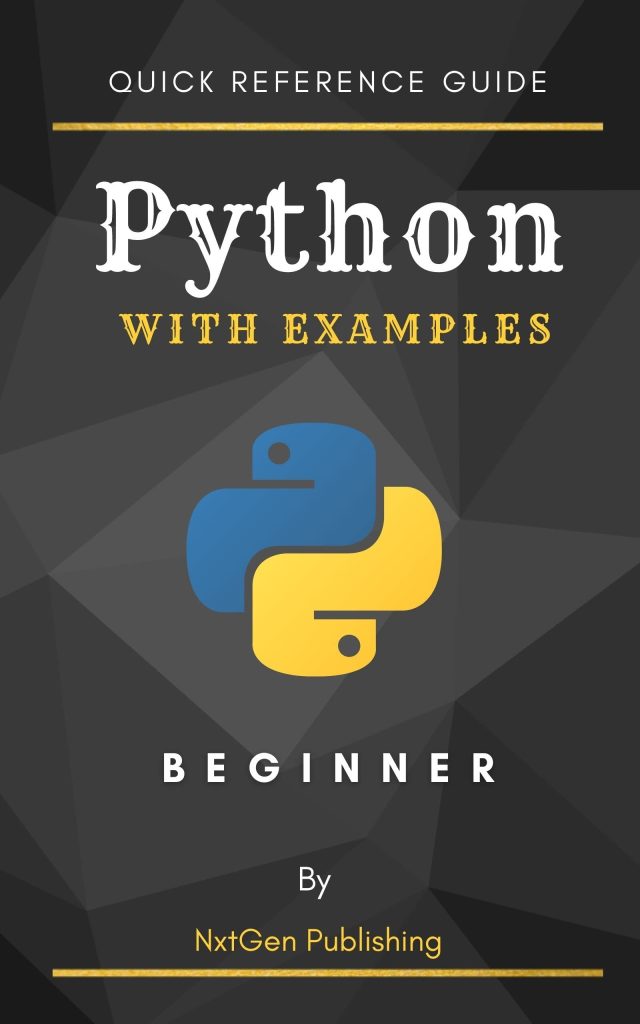
Middleware in Flask is a way to add functionality to your Flask application by intercepting requests before they reach your view functions and responses before they are sent to the client. It is like a layer that sits between the client and the server, processing the incoming and outgoing data.
In Flask, middleware can be used for a variety of purposes, such as:
- Authentication and authorization
- Logging and monitoring
- Cross-Origin Resource Sharing (CORS) handling
- Data compression or transformation
Middleware functions are typically executed in the order they are registered, and they have the ability to modify the request or response objects, or even abort the request entirely.
One of the key aspects of Flask middleware is that it adheres to the WSGI (Web Server Gateway Interface) specification, which is a simple and universal interface between web servers and web applications or frameworks for Python. This means that any middleware that’s compatible with WSGI can potentially be used with Flask.
Here’s an example of a simple middleware function that prints the request path:
def simple_middleware(environ, start_response):
print("Request path: ", environ["PATH_INFO"])
return app(environ, start_response)
This function takes two parameters, environ and start_response. The environ is a dictionary that contains all the information about the incoming request, while start_response is a callable that starts the HTTP response.
As you can see, middleware in Flask provides a powerful way to extend your application’s functionality in a clean and reusable way. In the following sections, we will dive into how to create, register, and apply custom middleware to your Flask application.
Creating Custom Middleware Functions
To create custom middleware functions in Flask, you need to understand the structure of a WSGI middleware. A WSGI middleware function takes the WSGI environment environ and the start_response callback as arguments. It is also expected to return an iterable, usually the response generated by a Flask app or another middleware. Here’s a template for a custom middleware function:
def custom_middleware(environ, start_response):
# Your custom logic goes here
# Call the next middleware or Flask app
return app(environ, start_response)
Let’s create a middleware that logs the time it takes for a request to be processed. This middleware will wrap around the Flask app and record the time before and after the request handling:
import time
def timing_middleware(environ, start_response):
start_time = time.time()
response = app(environ, start_response)
duration = time.time() - start_time
print(f"Request took {duration} seconds")
return response
In the above code, app refers to the Flask application object. The timing_middleware function calculates the time before calling the Flask app and then calculates the duration after the app handles the request. The duration is then printed to the console.
Another common use case for middleware is to handle exceptions globally. Here’s an example of a middleware that catches any unhandled exceptions and returns a custom error response:
def exception_handling_middleware(environ, start_response):
try:
# Call the next middleware or Flask app
response = app(environ, start_response)
return response
except Exception as e:
# Log the exception and return a custom error response
print(f"An error occurred: {e}")
start_response('500 Internal Server Error', [('Content-Type', 'text/plain')])
return [b'Internal Server Error']
In the exception_handling_middleware function, we wrap the call to the Flask app with a try-except block. If an exception occurs, we log the error and return a 500 Internal Server Error response.
Creating custom middleware functions allows you to implement cross-cutting concerns in your Flask application in a reusable and modular way. In the next section, we’ll look at how to register these custom middleware functions with your Flask app.
Registering Middleware in Flask
Once you have created your custom middleware functions, the next step is to register them with your Flask application. This process is straightforward and can be done in just a few lines of code. You can register middleware at the application level, meaning it will be applied to all routes in your Flask app.
To register middleware in Flask, you use the wsgi_app attribute of the Flask application object. This attribute is a callable that Flask uses to handle each incoming request. By wrapping this callable with your middleware, you can insert your custom logic into the request handling process.
Here’s an example of how to register a single middleware function with a Flask app:
from flask import Flask
app = Flask(__name__)
# Your custom middleware function
def my_middleware(environ, start_response):
# Custom logic here
return app(environ, start_response)
# Register the middleware
app.wsgi_app = my_middleware
In this example, we define a Flask app and a custom middleware function called my_middleware. We then register the middleware by assigning it to app.wsgi_app. Now, every request to the Flask app will pass through the my_middleware function before being handled by the app.
If you have multiple middleware functions, you can chain them together by wrapping them around each other. Here’s an example of registering multiple middleware functions:
# Multiple custom middleware functions
def middleware_one(environ, start_response):
# Custom logic for middleware one
return app(environ, start_response)
def middleware_two(environ, start_response):
# Custom logic for middleware two
return app(environ, start_response)
# Chain the middleware functions
app.wsgi_app = middleware_one(middleware_two(app.wsgi_app))
In this example, we define two middleware functions, middleware_one and middleware_two. We then chain them together by passing the result of middleware_two(app.wsgi_app) as an argument to middleware_one. This way, requests will first go through middleware_two, then middleware_one, and finally be handled by the Flask app.
By registering middleware with your Flask app, you can apply custom processing to every request and response, making it a powerful tool for adding additional functionality to your application.
Applying Middleware to Routes
However, there might be situations where you don’t want all your routes to go through the same middleware. Perhaps you have some routes that require authentication and others that don’t, or some routes that should log requests while others shouldn’t. Flask enables you to apply middleware to specific routes, giving you fine-grained control over the request handling process.
To apply middleware to specific routes, you can use the before_request and after_request decorators provided by Flask. These decorators allow you to execute functions before or after a request is handled by a specific route or blueprint.
Here’s an example of applying middleware to a specific route using the before_request decorator:
from flask import Flask, request
app = Flask(__name__)
# Middleware function
def log_request():
print(f"Request made to: {request.path}")
# Route with middleware
@app.route('/some_route')
def some_route():
return "This is some route"
# Apply middleware to the route
@app.before_request
def before_request_func():
if request.path == '/some_route':
log_request()
In the above example, the log_request function acts as middleware, printing the request path. We then define a route /some_route and use the @app.before_request decorator to execute log_request before the request is handled by some_route. The if statement ensures that the middleware is only applied to the /some_route path.
Similarly, you can use the after_request decorator to apply middleware after a request is handled by a specific route:
# Middleware function
def add_custom_header(response):
response.headers["X-Custom-Header"] = "Custom Value"
return response
# Route with middleware
@app.route('/another_route')
def another_route():
return "This is another route"
# Apply middleware to the route
@app.after_request
def after_request_func(response):
if request.path == '/another_route':
return add_custom_header(response)
return response
In this example, the add_custom_header function adds a custom header to the response object. We use the @app.after_request decorator to apply this middleware to the /another_route. Again, we use an if statement to ensure that the middleware is only applied to that specific route.
Applying middleware to specific routes in Flask provides the flexibility to customize request and response handling on a per-route basis. Whether it’s for authentication, logging, or any other purpose, this approach enables you to build a more tailored and efficient web application.
Testing Middleware in Flask
After creating and registering middleware in Flask, it’s important to test it to ensure that it works as expected. Testing middleware involves sending requests to your Flask application and verifying that the middleware is correctly processing the requests and responses. Testing can be done manually by running the Flask app and making requests to it, or programmatically using a testing framework like pytest.
Here’s an example of how to test middleware using the Flask test client:
from flask import Flask
import unittest
app = Flask(__name__)
# Register your middleware here
# app.wsgi_app = your_middleware(app.wsgi_app)
class MiddlewareTestCase(unittest.TestCase):
def setUp(self):
self.app = app.test_client()
def test_middleware_response(self):
response = self.app.get('/some_route')
# Assert that the middleware modified the response as expected
self.assertEqual(response.status_code, 200)
# If your middleware adds headers, you can check them like this:
self.assertEqual(response.headers.get('X-Custom-Header'), 'Custom Value')
def test_middleware_request(self):
# If your middleware logs something or modifies the request,
# you can assert those changes here
pass
if __name__ == '__main__':
unittest.main()
In the example above, we use Python’s built-in unittest framework to create a test case for our middleware. We set up the Flask test client in the setUp method and then define test methods to check the middleware’s behavior. The test_middleware_response method sends a GET request to a route and asserts that the response has the expected status code and headers. The test_middleware_request method is a placeholder where you would test any changes the middleware makes to the request object.
Testing middleware is important for maintaining the reliability and stability of your Flask application. By automating the testing process, you can quickly catch any issues introduced by changes to the middleware or the app itself. With proper testing, you can ensure your middleware is performing as intended and providing the desired functionality to your Flask application.






